Webisode #4: La Brea Bakery – Part One
Here we are, at the famous, original LaBrea Bakery (not the facility that makes all the par-baked bread that is shipped across the country and sold at supermarkets, but the one that Nancy Silverton founded to serve the people and restaurants of Los Angeles). It takes a bakery to make all the dough required by a place as popular as Pizzeria Mozza because they produce anywhere from 500 to 700 pizzas a day, and that’s a lot of dough to make–probably somewhere around 300 to 400 pounds of dough balls! How fortunate that Nancy, who no longer owns LaBrea Bakery, has such a close relationship with it because, even in the expansive Mozza kitchens there’s definitely nowhere near enough room to make this much dough with this much complexity. What you’re about to see in this segment is the application of the artisan bread making technique that Nancy mastered when she created LaBrea Bakery, now applied to a normally simple product called pizza dough.
We were greeted at the door of the large building in an industrial part of town, by Production Manager Jon Davis, who took us inside the production area and showed us everything except the “secret ingredients” and the actual formula. In this segment, we’ll see the preferment (aka poolish, or sponge) being made and then added to the final dough, which comes together beautifully. Next week, in LaBrea Bakery Part Two, we’ll see what happens from this point until it arrives at Pizzeria Mozza where it is transformed into ethereal pizzas.
I often speak and write about bread being the result of a series of transformations: wheat transformed into flour; flour transformed into living, leavened dough; and dough transformed into bread. Of course, with pizza, there is one additional transformation: bread dough into pizza. I define a transformation as a radical change of one thing into something totally new and other. For instance, living wheat is killed when it is pulverized into flour, all it’s life giving properties now destroyed. But when it is combined with salt, water, and leaven (yeast) it changes into a new substance and comes back to life as dough where it continues to transform itself through the biological activity of yeast, bacterial, and enzyme activity. When it is put into the oven, however, the dough gives up this life; the yeast is killed, as are all the living organisms in the dough that brought forth its unique personality and flavor, but in the process the dough is transformed into bread. That is, it goes in alive and comes out dead, but it goes in as dough and comes out as bread. In one analogy, it is like a caterpillar goes into the oven but a butterfly comes out–yes, a radical transformation. In rare instances, such as often occurs at Pizzeria Mozza, there is yet one additional transformation that takes place (and here I stretch the metaphor to, possibly, the snapping point, but bear with me): pizza transforms itself into deliriously happy people!. Or more accurately, the people are transformed by the pizza into a state of pure culinary bliss.
But I get ahead of myself. For now, just glory in the transformation of flour into dough and, as we continue this series on Pizzeria Mozza in the coming weeks, we’ll go through the whole string of marvelous transformations together. Enjoy!!
Recent Articles by Peter Reinhart
- Randy Clemens and Forest Farming in Uruguay — The Back to The Earth Movement is Back!
- It’s not too late to chase your dreams: “Pizza From the Heart” A New Book by Paulie and Mary Ann Gee
- Kyle Ahlgren on the Artisan Baking Center Online Classes (and a special offer)
- Multi-James Beard Nominee Cathy Whims of Portland’s Nostrana and her Brand New Book
- Pizza Quest: KID, Manhattan’s New Slice Cafe, with Chefs Ian Coogan and Max Blackman-Gentile
- Peter Scott Ruben: Why Frank Sinatra is the true “Chairman of the Board,” and the Greatest of the Greats
Add Comment
You must be logged in to post a comment.



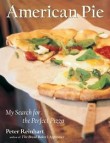
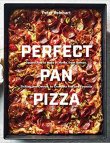
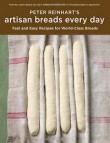
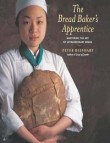
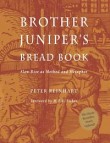
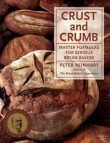
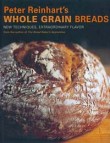
I had pizza at Mozza two years ago and still dream about it. Peter this is so exciting. Looking forward to watching. Love your new site.
Hi Peter, that video of La Brea Bakery mixing process is great! Can’t wait for the next episode. Thanks so much.
@Madeline Peters: The recipe they give out in their pizza making classes is not their actual recipe; it’s a “dumbed down” home version that they think will be easier for people to make. Supposedly they are going to come out with a Mozza cook book that will disclose the actual recipe. Can’t wait for that either!
Jim:
How do they make that dough so crispy? I was floored at how thin it was yet a slice did not droop. Even with the fresh mozzarella it held up.
Madeline,
I think you have to chalk that up to Nancy Silverton’s brilliance as a baker. She is truly one of the greats, who decided to apply her amazing skills to pizza. The Mozza crust is so tender and crispy at the same time that you can’t quite believe it. If you have a chance to go to the pizza baking class, do go. It is so interesting and so delicious! It was a bit disappointing that they don’t actually share their real recipe; but when they start making these incredible pizzas and feeding them to you, you forgive them, very fast. For anyone who is a real aficionado of pizza, the Mozza pizza making class is just the pinnacle. You have to do it, not just for what you learn, but to taste what really great pizza they are making there. Wow.
Regards,
Jim S.
Hi Peter,
Love the site! Love the transformations throughout – I sense a new rise for you all! Congratulations!